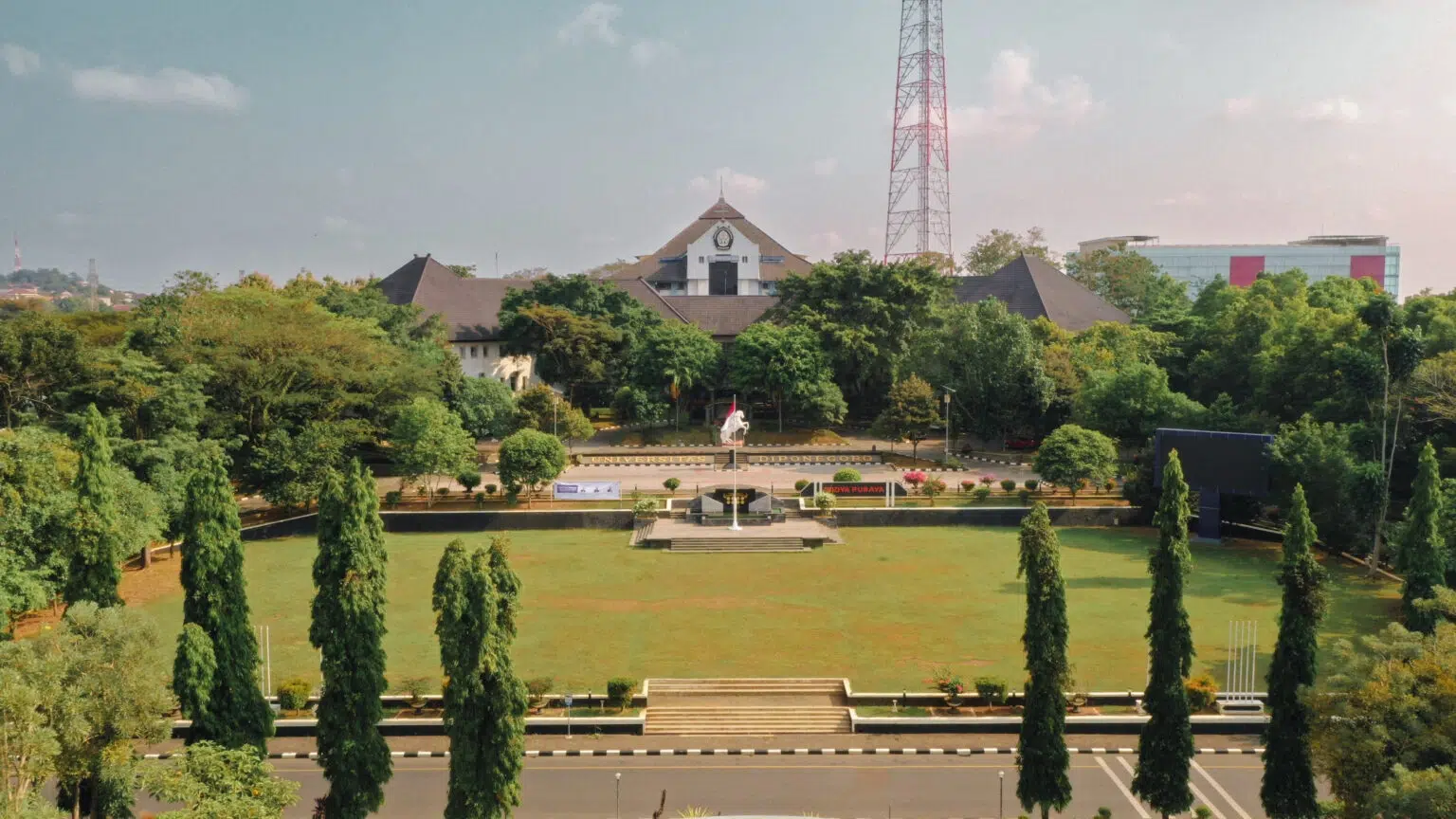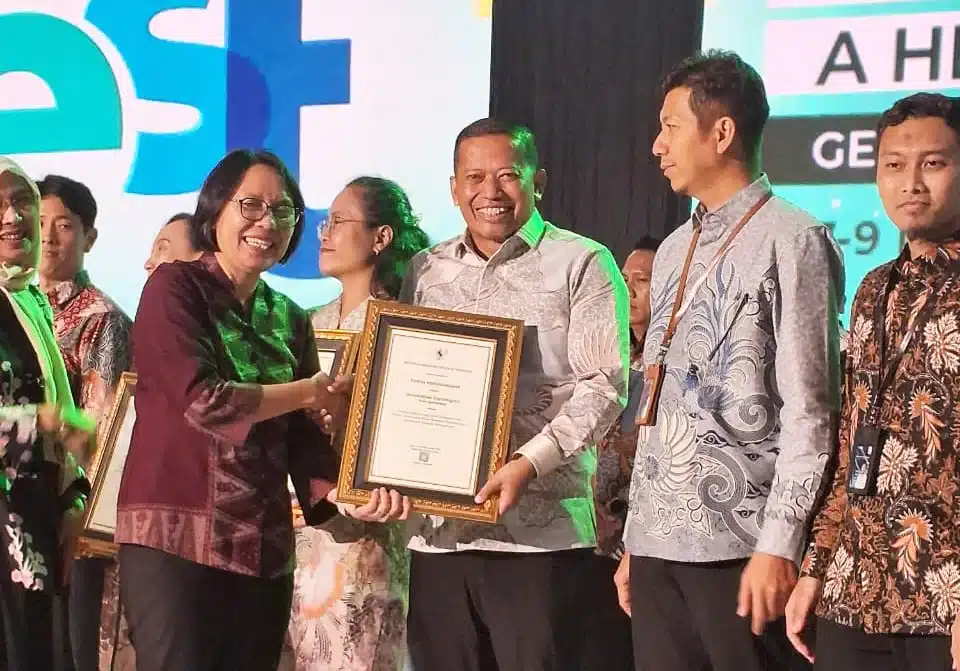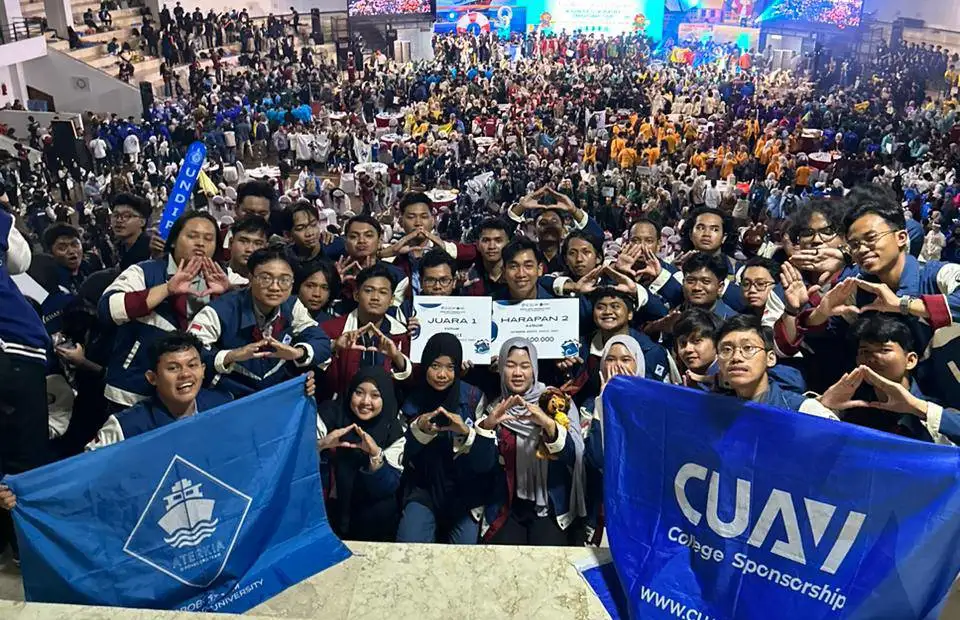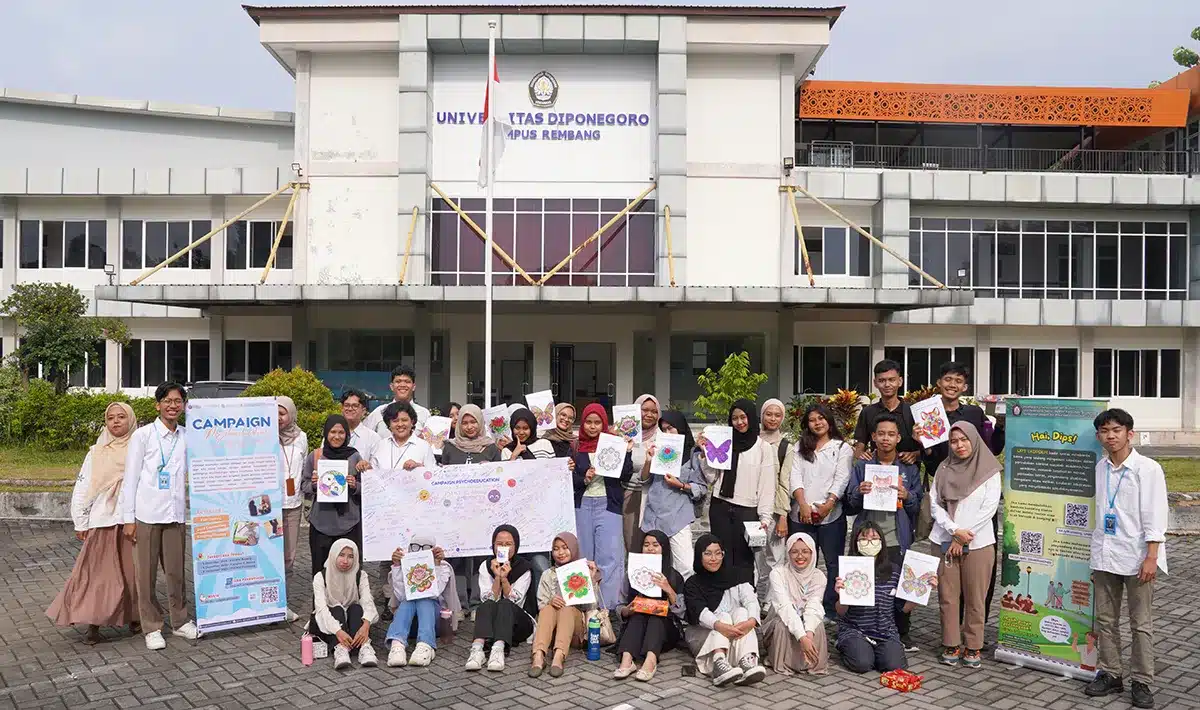SEMARANG – Ultrafiltration of surfactant membranes is effective in treating liquid waste in batik production which mostly uses reactive dyes such as remazol, indigosol, naphthol and rapid in the dyeing process. “Untreated dyestuff wastewater certainly causes a negative impact on the environment. One of the negative impacts that arise are the presence of red flood water, green flood water due to the rapid growth of catfish eye plants, as well as sewers that smell bad,” said Prof. Nita Aryanti, S.T., M.T., Ph.D in her inaugural speech as Professor of Chemical Engineering at Faculty of Engineering Diponegoro University (UNDIP), on Tuesday (8/5/2021).
According to the woman who was born in Semarang on January 17th 1972, who delivered a scientific speech with the title “Integrated Surfactant Membrane Technology for Removal of Dyes in Processing of Wastewater”, the research used materials which directly used from the field. “We take batik waste from industries in Pekalongan, Solo and Semarang for us to process it in the laboratory,” said the doctor of philosophy (PhD) from University of Leeds, England.
The lecturer who had primary and secondary education in Semarang City revealed that batik production waste, especially in the form of liquid waste, is currently a problem itself. Each batik production business unit produces an average of 10 m3 of liquid waste per/day, so this alumni of Semarang 3 High School is encouraged to find solutions to overcome this problem. Moreover, seeing the number of people who depend on the batik industry in Indonesia, so the choice is to preserve the batik business while also preserving the environment.
The large population of the batik industry in Indonesia, which reaches 700 thousand business units (data from Statistics Indonesia for 2019), as well as the recognition from UNESCO that batik is a world heritage, have motivated Nita to develop a method of processing batik liquid waste which materials are environmentally friendly and its processing technology can be reached by industry owners in the category of micro-enterprises. The technology should also easy to be operated. Ultrafiltration technology is considered more suitable than nanofiltration technology to make it more affordable for batik businesses, which are mostly Small and Medium Enterprises (SMEs).
The liquid waste that reaches 10 m3 per/day/in batik business usually contains levels of Chemical Oxygen Demand (COD) ranging from 937 mg/l and dyes of 185 CU. This value far exceeds the maximum allowable level in accordance with the Regulation of the Minister of the Environment Number P.16/MENLHK/SETJEN/KUM.1/4/
The results of her research and observation with the team since 2015, there are two important points in batik production activities related to the environment. They are the production of liquid waste and the use of reactive dyes. According to her, 70% of all water used in the production process will come out as waste water. If it is not processed properly, the impact will give continual impact in the nature and be harmful to health and the environment.
Reactive dyes that are widely used in the batik industry include remazol, indigosol, naphthol and rapid, are categorized as pollutants that are harmful to health and the environment if is not processed properly. Reactive dye waste which is generally smaller in size of membrane pore size is a complex compound that is difficult to degrade naturally, it has small particle size and can be dissolved in water. Therefore, it is important to implement a wastewater processing system in batik.
Regarding the choice of the MEUF method, Nita, who completed her Bachelor’s Degree in Chemical Engineering at Undip and Master’s Degree at Bandung Institute of Technology, considered that ultrafiltration membranes have smaller pore sizes and require lower pressure and energy. It is also more feasible to be applied to the textile industry, especially batik. A membrane is a technique for separating two or more phases of substances with the help of a semipermeable membrane, which is a type of polymeric membrane that allows certain molecules or ions to pass through by diffusion—or sometimes through special processes such as facilitated diffusion, passive transport or active transport.
Membrane technology, especially ultrafiltration, is currently widely used in wastewater processing. The problem is, for wastewater pollutants, reactive dyes, which are generally smaller than the membrane pore size, cannot be separated by ultrafiltration. Therefore, the ultrafiltration method is developed through the integration of membrane-surfactant technology with the addition of surfactants.
Surfactant is a compound that has two groups, each of which can bind to water and oil or fat, and has the ability to form foam. This system allows small molecule pollutants to be retained by the ultrafiltration membrane. The type of surfactant used can be anionic, nonionic or cationic surfactants.
Ultrafiltration-surfactant membrane integration has now been used to separate Remazol dye (with Cetylpyridinium Chloride surfactant) and Indigosol dye (with Sodium Dodecyl Sulphate surfactant) with dye removal efficiency reaching 98.50% for Remazol and 99.0% for Indigosol. Meanwhile, batik wastewater processing with the same system but with the surfactant Sodium Dodecyl Sulphate is able to produce a removal efficiency of 85% TSS (Total Suspended Solid) and COD.
In the 2021-2022 research period, academic who teaches Emulsion and Surfactant Technology, Organic Chemistry, and Process Computing courses, are intensely exploring and characterizing plant-based surfactants in Indonesia – in this case lerak and jatropha leaves. Then she implements it as a surfactant in the integration of membrane-surfactant ultrafication. Ultrafiltration integration of surfactant membrane- micellar technology (MEUF) itself is the concept of separating particles that are smaller than the pore size of ultrafiltration membranes by increasing the particle size through the help of surfactants added with specific concentrations to form micelles (a large collection of surfactants). She hopes that what she is doing with the team can be completed in 2030 with the result of a textile waste treatment unit (in which batik is included) based on membrane integration.
The development of a membrane-surfactant integration system for natural materials by the Head of Chemical Engineering Undergraduate Study Program is using a non-synthetic saponin surfactant. Natural ingredients that effectively contain saponins are lerak; while other natural ingredients that are being analyzed for their effectiveness as surfactants are castor leaves, which contain sufficient saponins. Lerak extract as a surfactant is able to reduce the concentration of Remazol dye and reduce chromium levels in batik wastewater. Many of these research results have been published in scientific articles in various reputable international journals. The lerak fruit, commonly called soapberries or soapnuts, grows a lot in Indonesia. It is well known as a natural ingredient that is used as traditional soap by utilizing its seeds. The use of saponins as surfactants in the membrane-surfactant integration system is able to remove Remazol, Naphthol and Indigosol dyes with dye removal efficiency in the range of 82.25% – 99%.
Although membrane-surfactant integration has been shown to be capable of reducing dyestuffs and can be implemented in sewage treatment, this method needs to be further developed to overcome the limitations of this system. For this reason, a comprehensive ultrafiltration-surfactant unit design for textile wastewater processing has been designed in collaboration between Department of Chemical Engineering and Small and Medium Enterprises of Batik. This design is equipped with a system for surfactant recovery to minimize operational costs.
Being asked about how she felt about reaching the highest academic level, the mother of four children, all of whom were boys, said that she was grateful. She acknowledged that this achievement is from the support of many parties, starting from her family, campus environment and university leaders. “With the mandate as a professor, please pray for the research roadmap to find the great batik waste processing method, so that it can be completed sooner than scheduled,” she said. (PR team)
Translated by: Titis (Public Relations)










